Dalvík 作者: 来源: 发布时间:2021-04-09
一、所属省或是州,具体位置,人口,面积
Dalvík is the main village of the Icelandic municipality of Dalvíkurbyggð. Its population is approximately 1,400. The town's name means "valley bay."Dalvík is a seaside resort by Eyjafjörður, at the mouth of Svarfaðardalur in Dalvíkurbyggð. The town was originally within Svarfaðardalshreppur, but was made a special district on January 1, 1946. Dalvík was granted town rights on April 22, 1974. The population was 1370 in 2015.
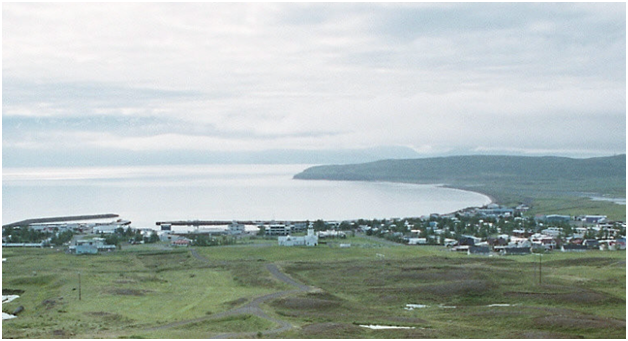
二、自然地理
1.地理条件
Dalvík is on the western shore of Eyjafjörður in the valley of Svarfaðardalur. The mountains of Tröllaskagi are considered by many to be one of the most magnificent outdoor paradises in the country. Svarfaðardalur lies in the middle of this mountain cluster and from there there are mountain roads to all directions; over to Þorvaldsdalur and Hörgárdalur, west to Skagafjörður, out to Fljót and over to Ólafsfjörður. Here you can find hiking trails suitable for everyone all year round. For mountaineers, there are mountain peaks of all shapes and sizes. Rimar, Stóllinn, Hnjótafjall and Dýjafjallshnjúkur are peaks that every hiker can be honored by. For those who prefer mountain roads and mountain passes, there is plenty to take in. For centuries, the national road between Eyjafjörður and Skagafjörður lay around Heljardalsheiði. From the bottom of Skíðadalur, the road leads up to Tungnahryggsjökull. There are crossroads to Skagafjörður and up into Hörgárdalur. There is a cabin for Ferðafélag Svarfdæla for hikers to use.
2. 交通情况
Dalvík harbor is a regional commercial port for import and fishing. The ferry Sæfari, which sails from Dalvík, serves the island of Grímsey, Iceland's northernmost community, which lies on the Arctic Circle.
三、经济发展和规模
Dalvík has a population of about 1500. The fishing industry, fish processing and other industries related to marine use are of paramount importance, but there are also powerful industrial and food companies that create employment for many people. Many also have employment in various services, trade and commerce. Dalvíkurhöfn is a large and extensive fishing and cargo port. From there, the Grímsey ferry sails Sæfari and keeps Grímsey, the northernmost settlement of Iceland, in connection with the mainland.
The villages of Hauganes and Árskógssandur stand on Árskógsströnd. In each, less than 200 people live. Life is all about fishing and fish processing. At Árskógssandur there is a ferry port for the Hrísey ferry Sævar which transports goods and people to and from Hrísey, "Perla Eyjafjarðar".Milk production is the main livelihood of farmers in Svarfaðardalur and Árskógsströnd, but sheep farming has declined. Horsemanship is practiced here among both farmers and locals, but there are also chicken farms, fur farms and other branches, albeit on a smaller scale.Tourism is a growing industry in the municipality and powerful companies in this field have been built up here.
The annual accounts of Dalvíkurbyggð 2019 were presented for the first discussion in the local government on 21 April. According to Article 61 of the Local Government Act no. 138/2011 and the municipality's articles of association, the annual accounts shall be confirmed no later than 15 May each year. The local government discussed the annual accounts and the second discussion took place on Tuesday 12 May 2020.
KPMG has audited the annual accounts and signs them in parallel with the processing and endorsement of the local government at a later discussion. The annual accounts are considered to give a clear picture of the municipality's financial position at the end of the year and are in accordance with the Annual Accounts Act and the Local Government Act.
The results of the annual accounts are good and somewhat above plan. This is largely due to higher income than expected in all income sources. The statutory maximum income source was new, except for property tax in category A, which was 0.50%, but the statutory maximum there is 0.625%.The operating result of Part A is positive by ISK 155,977,000 but the estimate was ISK 33,250,000 with appendices for the year 2019.The operating result of Parts A and B is positive by ISK 204,426,000 but the plan assumed ISK 69,994,000 with appendices for the year 2019.Long-term liabilities to credit institutions at the end of 2019 were ISK 883,730,000 but were at the end of 2018 ISK. 737,246,000.In 2019, a loan was taken out in the amount of ISK 149,881,000 and re-lent to Leiguíbúðir Dalvíkurbyggðar.Repayments of long-term loans for Parts A and B were ISK 123,801,000.
Thus, the debt benchmark of Dalvíkurbyggð is 43.9%, which is considerably below the debt benchmark of municipalities.Investments for the year 2019 for the group were ISK 333,732,000 and made an estimate with appendices for ISK. 324,406,000.Working capital from operations was ISK 400,253,000 for Parts A and B. In 2018, working capital from operations was ISK 433,157,000.
The total income of Parts A and B was around ISK 2,539.0 million, of which the local tax is 40.6%, the real estate tax 5.5%, contributions from the Equalization Fund 25.9% and other income 28%.
Salaries and salary-related expenses of Parts A and B are ISK 1,352.5 million. or about 53.3% of revenue. The working capital ratio of Parts A and B was 1.19 and the debt ratio was 70.4%.
As can be seen in the annual accounts, the operating result is ISK 134 million better than expected in the budget and these reasons are the main ones, looking at the group as a whole:
The biggest difference is higher income, which is a total of 116 million more than planned. There, the tax revenue is 43 million higher than expected and the revenue of the equalization fund is higher, amounting to just over 30 million ISK. Service income and other income returned ISK 38 million more than expected. There is not much difference in operating expenses, but they are ISK 9 million lower than expected.
The local government report states that the current Covid-19 pandemic will have a significant impact on many areas around the world, including the economy. There is considerable uncertainty about the final effects of the epidemic, e.g. due to uncertainty about how long it will last and what the effect will be after it expires. It can be expected that the impact on the municipality's operations will be significant, e.g. due to lower tax revenues and other income, deferral of due dates and increased expenses.
It is the opinion of the municipality's management that it is not possible, in light of the above uncertainty, to make a final assessment of the impact of Covid-19 on the municipality's operations, but not assess its solvency.
I would like to reiterate my thanks from the local government to the employees of Dalvíkurbyggð and the management for the good results during the operating year and for the work on the annual accounts.
I would also like to thank my colleagues in the local government for their solidarity with the management of the municipality, which i.a. leads to this good operating result and shows the power, positivity and unanimity that lives in the municipality.
https://www.dalvikurbyggd.is/is/stjornsysla/fjarmal-og-rafraen-stjornsysla/arsreikningur
https://www.dalvikurbyggd.is/static/files/Arsreikningar/2019/arsreikningur-2019.pdf
https://www.dalvikurbyggd.is/is/stjornsysla/fjarmal-og-rafraen-stjornsysla/fjarhagsaaetlun
https://www.dalvikurbyggd.is/static/files/Adalvefur/Fjarhagsaetlanir/fjarhagsaaetlun-2017-2020.pdf
https://www.dalvikurbyggd.is/static/files/Fjarhagsaaetlanir/2020-2023/fjarhagsaaetlun-samsett.pdf
https://www.dalvikurbyggd.is/is/mannlif/sagan
四、产业特点重点项目
The local economy is based upon fisheries and fish processing.Dalvík is also a tourist destination for boat trips in whale watching and heli skiing.Dalvik process virtual machine in the Android operating system was named after this village. The virtual machine that runs the Android operating system for mobile phones is called Dalvik after the town of Dalvík, from where its author, Dan Bornstein, traces his ancestry.
In accordance with Article 23 of the Planning Act no. 123/2010, the zoning committee working on the preparation of a new zoning plan shall "compile a description of the zoning project which explains the committee's emphasis on the zoning, its premises and existing policy and how the public and other stakeholders will be presented".
This description together with a leaflet (main assumptions) is now available and those who are interested can read it on the website of the municipality in question, see the list above. The data in question will also be available in printed form at their offices. Those who wish to comment on the available documents or submit suggestions on their content to the Co-operation Committee can return them to the office of their home municipality at any time. When the final zoning proposal is available, it will be formally presented to the public at a general meeting or in another satisfactory manner and prominently advertised in accordance with the provisions of the zoning law.
The master plan is a mandatory planning plan that covers one municipality and is approved by the local government and approved by the Minister for the Environment. The role of the master plan according to the Planning and Building Act (No. 73/1997 m.s.b.) is to coordinate and formulate a long-term policy in the various issues of the municipality and show the municipal council's policy on settlement development, land use, land use, transport and service systems and environmental issues. The master plan is first and foremost a management tool used to achieve specific goals for the development of the municipality.
The master plan is intended to ensure that construction in the municipality will be in accordance with a pre-planned plan that all stakeholders have approved for their part. The master plan is also a source of information for the municipality's residents, employees, elected representatives, designers and developers.
In addition to the master plan, the Planning and Building Act provides for regional planning and local planning. Regional planning covers two or more municipalities and its role is to coordinate the policy of the relevant municipalities in planning and environmental matters. The master plan is then the basis for the preparation of a local plan for individual districts and construction areas. The local plan describes in detail the use of land, the utilization rate of plots, house construction, the arrangement of the traffic system, plots and building plots.
The zoning report mentions the main premises of the zoning, sets out objectives for settlements, the environment, the economy, transport and service systems, defines land use plots and sets provisions for them. The master plan delimits scope for activities and projects, but also sets out many aspects of utilization, e.g. how stakeholders can or may take advantage of the defined scope.The master plan of Dalvíkurbyggð 2008-2020 includes a review of the master plan of Dalvík 1992-2012 and the master plan of Árskógshreppur 1991-2011. With the approval of a new master plan, older master plans expire.
https://www.dalvikurbyggd.is/is/thjonusta/skipulags-og-byggingarmal/svaedisskipulag-eyjafjardar
https://www.dalvikurbyggd.is/is/thjonusta/skipulags-og-byggingarmal/adalskipulag-dalvikurbyggdar
五、风景名胜,景点( attractions)
1. The Regional Museum Hvoll
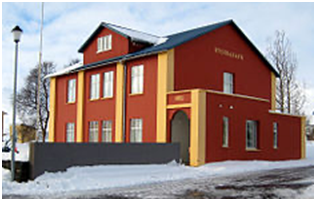
The Hvoll Regional Museum at Karlsrauðatorg in Dalvík was opened on December 12, 1987. The museum is divided into three parts; regional museum, natural treasures and personal history. Most of the museum's objects are from Dalvík, Svarfaðardalur and Árskógsströnd. There are, among other things, tools and interior items from the past that testify to the development of work culture in the municipality and the history of the settlement. There are also various ornaments made by craftsmen from the area. A replica of Upsakristi, the ancient row from Upsakirkja, is on display.
The museum has a number of stuffed Icelandic birds and animals from the depths of the sea. There are also mammals e.g. polar bear. In addition, there is a botanical museum, a shell museum, an egg and stone museum. A large map of the Svarfdæla Nature Reserve shows which birds nest there or stop by in the area.Part of the museum is dedicated to the memory of well-known individuals from the area - Jóhann Svarfdæling, Kristján Eldjárn, President of Iceland, the brothers Jón, Kristján and Hannes Vigfússon from Litla-Árskógur as well as sr. Friðrik Friðriksson, youth leader.The curator is Björk Hólm.
2. Library
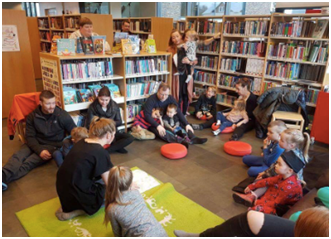
The library is a public library that serves the public and schools in Dalvíkurbyggð.Dalvíkurbyggð's library has a special children's department where you can access both new and old books. In the children's corner you will also find other types of entertainment materials such as puzzles, cards, blocks and teddy bears, for example.
The children's corner has facilities for children and adults to relax in, whether it is on the sofa or in a chair at the table. You can get paper and colors from an employee to draw and color.All children in Dalvíkurbyggð receive a library card free of charge against the responsibility of parents and guardians.Children's books can be rented for 30 days at a time, as well as audio books and video discs suitable for children.
https://www.dalvikurbyggd.is/is/mannlif/menning-og-sofn
https://www.dalvikurbyggd.is/is/mannlif/menning-og-sofn
3. The District Archives
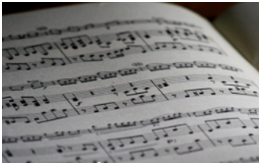
The District Archives collects, preserves and registers official documents in the district (excluding documents from government agencies), as well as documents from companies and from private property, as far as possible. Work is also underway to collect and register photographs.
https://www.dalvikurbyggd.is/is/mannlif/menning-og-sofn
六、历史文化
1.历史
The municipality of Dalvíkurbyggð came into being in 1998 when three municipalities outside Eyjafjörður; Dalvíkurbær, Svarfaðardalshreppur and Árskógshreppur merged under one roof. The logo of Dalvíkurbyggð is a picture of three mountains that represent the origin of the municipality.
On June 2, 1934, an earthquake shook Eyjafjörður, causing extensive damage to Dalvík and leaving about 200 people homeless. Its source was close to the settlement. This earthquake is called the Dalvík earthquake.On June 7, 1998, Dalvíkurkaupstaður and Svarfaðardalshreppur merged again with Árskógshreppur under the name Dalvíkurbyggð.Every year, a fish festival takes place in Dalvík. It is called the Great Fish Day and is held in August.Gísli, Eiríkur, Helgi, Café / bar and story center about Bakkabræður.
It is only over 100 years since an urban area began to form on Böggvisstaðasandur, as Dalvík was traditionally called. Until then, there were only loaded sea camps, poor huts and other obsolete structures related to small boat fishing that the farmers practiced alongside farming. At the end of the rowing, they pulled their boats ashore because there were no piers or harbor facilities. The first houses that people lived in all year round were turf farms, but the first wooden house was built in Dalvík in 1899. It is called Nýibær and still stands. Gradually the number of houses increased and in 1909 Dalvík received town rights. The first motorboats came to Dalvík in 1906 and the village grew surprisingly fast as one of the most important fishing towns in the North. For a long time, however, the lack of a harbor was very palpable in Dalvík and no permanent harbor was built there until 1939. Until that time, wooden piers were used that were weak when nature went to disaster and surf or sea ice swept them out to sea.
During the heyday of the Northern Herring, there was often life and excitement in herring salting in Dalvík, and during a period Dalvík was the third largest herring salting port in the country. The beginnings of urbanization on Árskógsströnd can be traced to the Norwegian herring fishing and herring salting, which was extensive here around the turn of the century 1900. Dalvík was part of Svarfaðardalshreppur until 1946, when the municipality was divided and Dalvík became an independent district association. In 1974, the town received town rights and was then called Dalvíkurbær. In 1998, these municipalities were merged together with Árskógshreppur and is then called Dalvíkurbyggð.
https://www.dalvikurbyggd.is/is/mannlif/sagan
2. 文化体育
The annual Fiskidagurinn mikli is held the Saturday after the first Monday of August, attended by up to 30,000 people who enjoy a free fish buffet sponsored by the local fishing industry. [4] Dalvík has had four representatives at the Eurovision song contest for Iceland, despite its small size.
In sports, Dalvík is probably most known for alpine skiing. Böggvisstaðafjall is one of the best known ski areas in Iceland. The town has produced a series of skiers who have represented Iceland in the Olympics, World Cups, World Championships, and European Cups, as well as other international and national competitions. Amongst these have been Daníel Hilmarsson, Sveinn Brynjólfsson and Björgvin Björgvinsson.Football teams from the village have had their ups and downs but have managed to produce some nationally known players; the most recognized one is former Cardiff City and Premier League forward Heiðar Helguson.Hamar golf club has a 9-hole course, a short drive outside Dalvík.
Dalvíkurbyggð owns and operates one sports hall and two community centers that also serve the purpose of sports halls. In addition, the municipality is involved in the operation of the UMFS ski area, golf course and sports area through grants to the associations that operate the areas.
Dalvík's swimming pool was taken into use in the autumn of 1994. The swimming pool is known for its beautiful architectural style and the wonderful view, whether it is a hot tub or a tower. The swimming pool is very popular among tourists who enjoy rest and sunbathing in the summer and those who visit us and experience the northern lights while relaxing in the hot tubs. Here you can find a 12.5m x 25m swimming pool, hot tubs, children's and rest pool, water slide, water mushroom and steam room.
A sports hall built next to the pool building was taken into use in October 2010. There is a 25m x 44m sports hall, two changing rooms (the whole house now has 6 changing rooms), equipment storage, a main entrance where you enter both the sports hall and the pool. The tunnels connect the sports hall to the youth club's facilities on the ground floor of the swimming pool building. The gymnasium building has a gym with weightlifting equipment, treadmills and all the main heating equipment. In the pool building you will also find a small gym without equipment where group lessons take place. When buying access to the gym, access to the swimming pool is included.
Árskógur is a social home that is rented out to individuals and groups all year round. In addition, the community center serves as a sports hall for students at Árskógarskóli. Árskógur has a small swimming pool that is only used for swimming lessons at Árskógarskóli and is not rented out with the community center. Equipment and equipment for most sports and good changing rooms are available.Árskógur is divided into a large hall that seats up to 250 people on the one hand and another smaller hall that seats 50-70 people on the other. You can open between them and then the smaller one is like a scene. A fully equipped kitchen is in the house. The community center in Árskógur is ideal for parties and celebrations.
https://www.dalvikurbyggd.is/is/thjonusta/ithrottir-og-tomstundarstarf/ithrottamannvirki
七、其他信息
The music scene here has long flourished and attracted a lot of attention. There are many choirs and here is a powerful music school. Playing activities have been practiced here since ancient times. Leikfélag Dalvíkur is a powerful amateur theater company that puts on one or two plays each year.
https://www.dalvikurbyggd.is/is/mannlif/leikfelag
八、联系方式
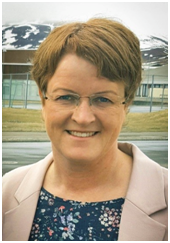
Town manager: Katrín Sigurjónsdóttir
Phone:460 4900
Email:katrin@dalvikurbyggd.is
Address:Town Hall 620 Dalvík
https://www.dalvikurbyggd.is/is/stjornsysla/stjornkerfi/sveitarstjori
